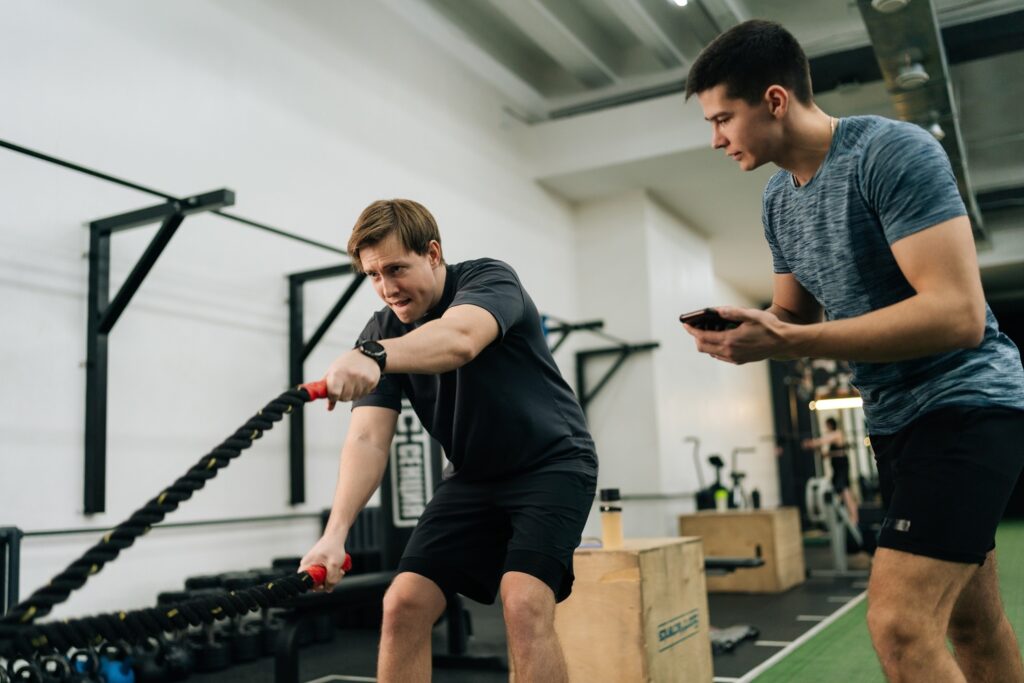
Getting started with CrossFit can be exciting, especially with all the new movements, fast-paced workouts, and supportive group energy. The class-based structure tends to attract people from a wide range of fitness backgrounds. Some show up with experience in weightlifting or team sports, while others are trying CrossFit as their first serious attempt at regular training.
But like any form of physical conditioning, it comes with a learning curve. Many beginners rush in with enthusiasm but overlook small decisions that can set them back or create unnecessary barriers. This list breaks down common pitfalls and offers practical ways to avoid them so you can train more effectively, learn with intention, and build habits that actually stick.
1. Skipping the Basics
Some new athletes dive into complex movements too quickly. Focusing on functional movements and fundamental principles at the start helps prevent injury and builds a solid base. Whether you’re joining a class at your local box or following a structured workout plan from an affiliated gym like RFX CrossFit, starting with the right foundation makes a long-term difference.
2. Treating Every Workout Like a Competition
CrossFit has a reputation for intensity, but not every session is a race. The workout of the day should challenge you without pushing you past your limits every time. Progress comes from consistency and learning when to dial things up or down.
3. Ignoring Proper Scaling
Not every movement or weight in a CrossFit workout is meant to be done the same way by everyone. That’s where scaling comes in. It means adjusting the difficulty to match your current ability. This might involve reducing the weight, modifying the movement, or doing fewer reps. For example, replacing pull-ups with ring rows or swapping box jump-overs for step-ups, still builds strength and skill without overloading your body. Scaling helps you train safely and keeps your workouts productive, especially in the beginning.
4. Underestimating Movement Quality
It’s tempting to chase speed or weight early on, but clean technique matters more. Learning how to brace, breathe, and align properly improves outcomes and helps maintain your training rhythm over time.
5. Neglecting Mobility Work
Mobility isn’t just for recovery days. Many CrossFit moves require joint flexibility, especially in lifts like the overhead squat. Skipping warm-ups or mobility drills can lead to poor positioning and missed reps. Taking five extra minutes to improve your range of motion can lead to smoother lifts and fewer setbacks.
6. Jumping Into Advanced Lifts
It’s easy to get excited about flashy barbell work, but movements like the clean and jerk demand coordination, timing, and control. Starting light and practicing regularly will pay off much more than forcing heavy lifts too early.
7. Lacking Patience With Gymnastics Skills
Skills like handstand walks or rope climbs often take months (or even years) to build a solid foundation. Trying to rush these progressions without first developing the necessary strength and confidence in fundamental movements, such as air squats or pull-up bar work, can lead to significant frustration, burnout, or, worse, injury.
8. Training Without a Plan
Random workouts will only take you so far. Many boxes offer lesson planning that gives each session purpose and progression, which helps reduce decision fatigue and keeps training consistent. Good program design is structured around goals like strength training, endurance, or skill development.

9. Overlooking Nutrition
Food habits impact recovery, energy, and overall progress. Without supportive nutritional strategies, you might feel sluggish or plateau early. You don’t need a strict meal plan, but basics like protein timing and hydration make a noticeable difference.
10. Doing Too Much, Too Soon
Jumping from zero to five classes per week can strain your system. Concurrent exercise, mixing CrossFit with other sports or cardio, requires recovery time. Listening to your body and spacing out sessions reduces the risk of muscular fatigue.
11. Not Tracking Progress
Improvements aren’t always obvious unless you’re logging your numbers. Documenting weights, times, and heart rate data can help highlight gains in cardiovascular endurance, strength capacity, or body composition that might otherwise go unnoticed.
12. Misjudging Your Fitness Level
Each person starts with a different background. Trying to match others’ paces or loads can set unrealistic benchmarks. Staying honest about your fitness level helps avoid burnout and supports gradual improvement.
13. Forgetting Recovery Tools
Warm-ups and cooldowns aren’t optional. Including tools like foam rolling, mobility work, or low-impact movements (like the kettlebell front-rack walking lunge or farmers carry) supports neuromuscular function and reduces injury risk over time.
Final Thoughts
Every athlete starts somewhere, and mistakes are part of learning. Staying curious, listening to your coaches, and focusing on steady growth will carry you further than any shortcut ever could.
If you’d like support as you begin, many age-specific courses and beginner-friendly CrossFit options are available in most cities. Just remember: every rep counts, and every session teaches you something, no matter how small. Over time, improvements inside the gym tend to carry over outside of it too, whether it’s more energy for daily tasks or better movement during everyday routines.











